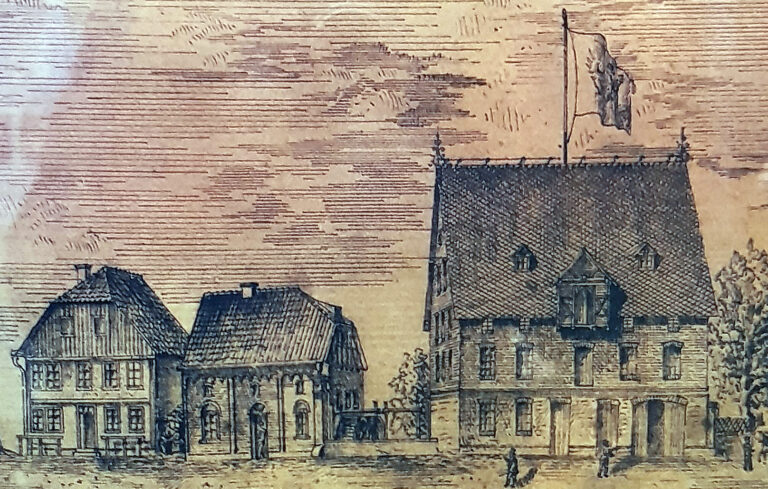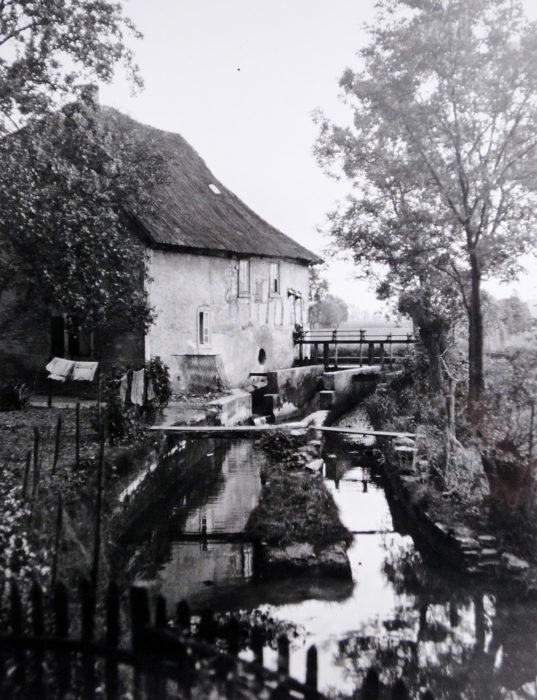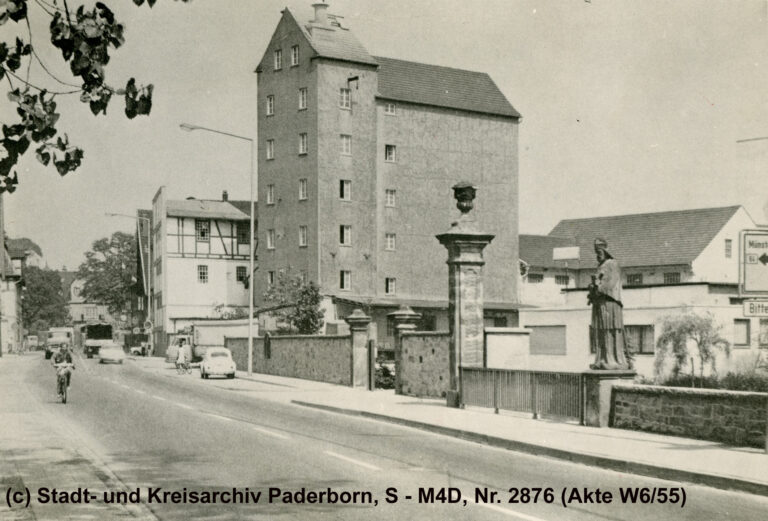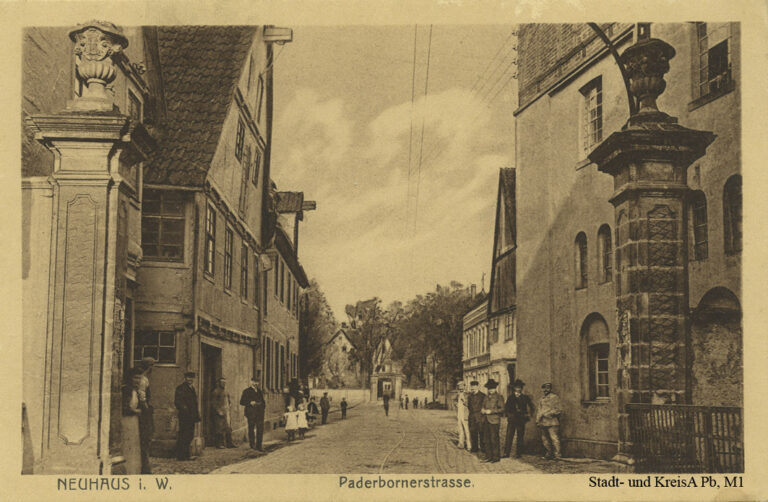[1] On the history of the Scherpel house and family, see Santel, Georg G: “vornehm einfach – eingeschossig massiv”. On the building history of the Scherpel house in Schloßstraße in Schloß Neuhaus, in: Die Residenz 52/122 (2012), p. 39-57.
[2] Cf. Report of the district commissioner on mills to the district government of Minden on the „projected mill facility of Sander zu Neuhaus“, 10 September 1849. LA Detmold, M 1 I U, Nr. 660, unfol.
[3] Cf. a. o. Report and expert opinion of the royal building inspector to the district government of Minden, 6 April 1853. LA Detmold, M 1 I U, Nr. 660, unfol.
[4] Cf. „Eingabe der Eingesessenen zu Neuhaus“, 22 May 1852 as well as „Gesuch der Bäkermeister“ to the district government of Minden, 21 May 1852. LA Detmold, M 1 I U, Nr. 660, unfol.
[5] Cf. Judgment with reasons of the „Königliche Generalkommission“ of 28 October 1870, StadtA Pb, A 3323, fol. 168v.
[6] Cf. Art. 208, Mutterrolle, Bd. 1 (1867), LA Detmold M 5 C, Nr. 5371.
[7] Cf. Middeke, Bild der Heimat, p. 7.
[8] Friendly hint by Mr Gregor G. Santel, November 2019. Cf. corresponding newspaper clipping in the „Neue Westfälische“, 16/17 August 2003.
[9] Cf. Hüser, Von der Reichsgründung, p. 122f.
[10] Cf. Middeke, Bild der Heimat, p. 7.
[11] Cf. Schäfers, Standorte, pp. 84.
[12] Cf. Middeke, Bild der Heimat, p. 7.
[13] Cf. Schäfers, Standorte,pp 87.
[14] Cf. a, o. aerial photograph from the year 1962, StadtA Pb, M5-20, Nr. 127.
[15] Cf. Middeke, Bild der Heimat, p. 1.
[16] Cf. Santel, Baugeschichte des Hauses Scherpel, p. 56; Middeke, Bild der Heimat, pp. 1.

![„Situation der Mühlen des Bodenstab [= „Roggenmühle“] und des Tüllmann [= Walkmühle] bei Neuhaus“ 1849 (LA Detmold, Regierung Minden, I U Nr. 660, unfol.)](https://paderpedia.de/wp-content/uploads/2020/09/Abb.-29-1024x599.jpg)
















